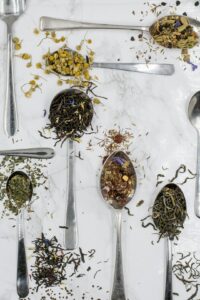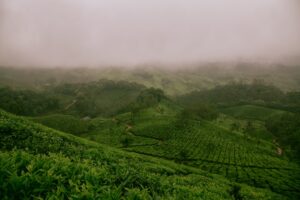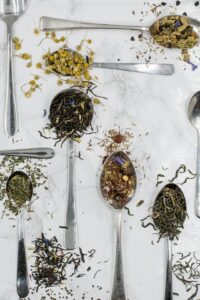Support our educational content for free when you purchase through links on our site. Learn more
[2023] Discover the Magic of Camellia Sinensis Seeds: A Guide to Growing Your Own Tea
Welcome to our comprehensive guide on growing Camellia sinensis seeds! If you've ever dreamed of cultivating your own tea, you're in the right place. In this article, we will delve into the fascinating world of Camellia sinensis seeds, providing you with all the information you need to nurture your very own tea plants.
Table of Contents
- Introduction
- Getting Started: What are Camellia Sinensis Seeds?
- Choosing the Right Variety
- The Planting Process
- Caring for Your Tea Plants
- Harvesting Your Tea Leaves
- Processing and Preparing Your Tea
- FAQ
- Quick Tips and Facts
- Useful Links
- Reference Links
Introduction
If you're passionate about tea, why not take things to the next level and grow your own tea plants? It's a rewarding and fulfilling experience that allows you to savor the essence of tea from seed to cup.
Getting Started: What are Camellia Sinensis Seeds?
Camellia sinensis is the species of plant that is used to produce most of the world's tea. The seeds of this remarkable plant contain all the genetic material necessary to grow into tea plants that will eventually provide you with fresh leaves for tea production.
Choosing the Right Variety
Before embarking on your tea-growing journey, it's crucial to choose the right variety of Camellia sinensis for your climate and preferences. There are various cultivars available, each with its own unique flavor profile and growth characteristics. Some popular varieties include:
- Camellia sinensis sinensis: This variety is known for its delicate flavors and is commonly used for green and white teas.
- Camellia sinensis assamica: This variety is favored for its robust flavors and is often used for black and pu-erh teas.
- Camellia sinensis cambodiensis: This variety is prized for its floral notes and is often used for oolong teas.
Consider your climate, available space, and taste preferences when selecting the right variety for your tea garden.
The Planting Process
Now that you know more about Camellia sinensis seeds and have chosen the variety that suits you, it's time to dive into the planting process.
Step 1: Preparing the Soil
Camellia sinensis thrives in well-draining soil that is slightly acidic (pH 6-6.5). Prepare the soil by incorporating organic matter, such as compost or well-rotted manure, to enhance fertility and drainage. Additionally, ensure that the planting area receives partial shade, as direct sunlight can scorch the delicate young plants.
Step 2: Sowing the Seeds
Gently sow the Camellia sinensis seeds about half an inch deep in the prepared soil. To improve germination rates, you can stratify the seeds by refrigerating them for a few weeks before sowing. Maintain a spacing of around 3-4 feet between each seed to allow sufficient room for growth.
Step 3: Proper Watering Techniques
Keep the soil consistently moist but not waterlogged. Avoid overwatering, as it can lead to root rot. Be mindful of the specific watering needs of your variety, as some may require more water than others. Mulching around the base of the plants can help retain moisture and suppress weed growth.
Step 4: Providing Adequate Sunlight
While Camellia sinensis thrives in partial shade, it still requires a few hours of direct sunlight daily to support healthy growth and leaf production. Place your tea plants in a location that receives morning or evening sunlight while being protected from scorching midday rays.
Caring for Your Tea Plants
Once your tea plants begin to establish themselves in your garden, it's essential to provide them with the care they need to thrive.
Fertilizing
Feed your tea plants with a balanced fertilizer in early spring and again in early summer. Avoid using excessive nitrogen-based fertilizers, as this can lead to lush foliage growth at the expense of flavor. Opt for organic options such as compost or well-balanced slow-release fertilizers formulated specifically for Camellia sinensis.
Pruning
To encourage bushier growth and maximize leaf production, prune your tea plants annually in early spring. Remove any dead or damaged branches and trim back long shoots to maintain an even shape. Regular pruning will also improve air circulation, reducing the risk of diseases.
Pest Control
Tea plants are generally resistant to pest infestations. However, keep an eye out for common tea pests such as aphids, spider mites, and caterpillars. If any infestation occurs, use organic pest control methods such as neem oil or insecticidal soap to protect your plants.
Harvesting Your Tea Leaves
The moment you've been patiently waiting for has arrived – harvest time! Generally, tea leaves are harvested when they are young and tender for the best flavor. The timing will depend on the type of tea you wish to produce.
- White tea: Harvest the leaves while they are still covered in fine white hairs, indicating their youthfulness.
- Green tea: Pick the leaves when they are fully expanded but still tender and vibrant in color.
- Oolong tea: Harvest the leaves when they have developed some red edges but are not fully oxidized.
- Black tea: Allow the leaves to fully mature and oxidize before harvesting.
To pick the tea leaves, hold the stem with one hand and pluck the young leaves and buds with the other. Aim to pick the top two leaves and the bud, as these are the most desirable for tea production.
Processing and Preparing Your Tea
Processing your freshly harvested tea leaves into the final product is an art form in itself. The techniques for processing tea can vary depending on the type you wish to create. However, the general steps involve withering, rolling, oxidizing (if needed), and drying the leaves. We recommend researching specific processing methods for each tea type you want to produce to ensure the best results.
FAQ
How long does it take for Camellia sinensis to grow?
Camellia sinensis plants typically take around 3-4 years to reach maturity and start producing quality leaves for tea. However, you can start harvesting small amounts of leaves for tea production after the plants have established themselves in the garden (around 1-2 years).
What is Camellia sinensis seed used for?
Camellia sinensis seeds are primarily used for propagation, allowing tea enthusiasts to grow their own tea plants. These seeds contain the genetic material necessary to cultivate tea plants that will eventually provide fresh leaves for tea production.
Is Camellia sinensis the same as Camellia sinensis?
Yes, Camellia sinensis and Camellia sinensis are the same species. The difference in names arises from the various varieties and cultivars of tea plants within this species.
Can I grow Camellia sinensis indoors?
While Camellia sinensis can be grown indoors, it requires specific growing conditions, such as ample sunlight or a grow light, proper humidity, and adequate space for the plants to grow. Make sure to select a suitable variety and provide the necessary care for successful indoor cultivation.
Quick Tips and Facts
- Camellia sinensis thrives in slightly acidic soil with a pH of 6-6.5.
- Adequate spacing between plants promotes air circulation and reduces the risk of diseases.
- Tea plants prefer partial shade but still require a few hours of direct sunlight every day.
- Pruning in early spring encourages bushier growth and maximizes leaf production.
- Tea pests such as aphids and spider mites can be controlled with organic methods like neem oil or insecticidal soap.
Useful Links
- Growing Teas™
- Camellia sinensis seeds on Amazon
- Camellia sinensis seeds on Walmart
- Camellia sinensis seeds on Etsy
- YouTube: How to Grow Camellia sinensis at Home
- Smithsonian Magazine: The Story of Tea
- Book: The Tea Book by Linda Gaylard
Reference Links
- University of California Statewide Integrated Pest Management Program
- North Carolina State University Extension: Tea Plant Production
Remember, growing your own tea is a labor of love. Enjoy the process, experiment with different tea varieties, and savor the unique flavors that only freshly picked leaves can provide. With patience and care, you'll be sipping on your homegrown tea in no time. Happy tea growing!









